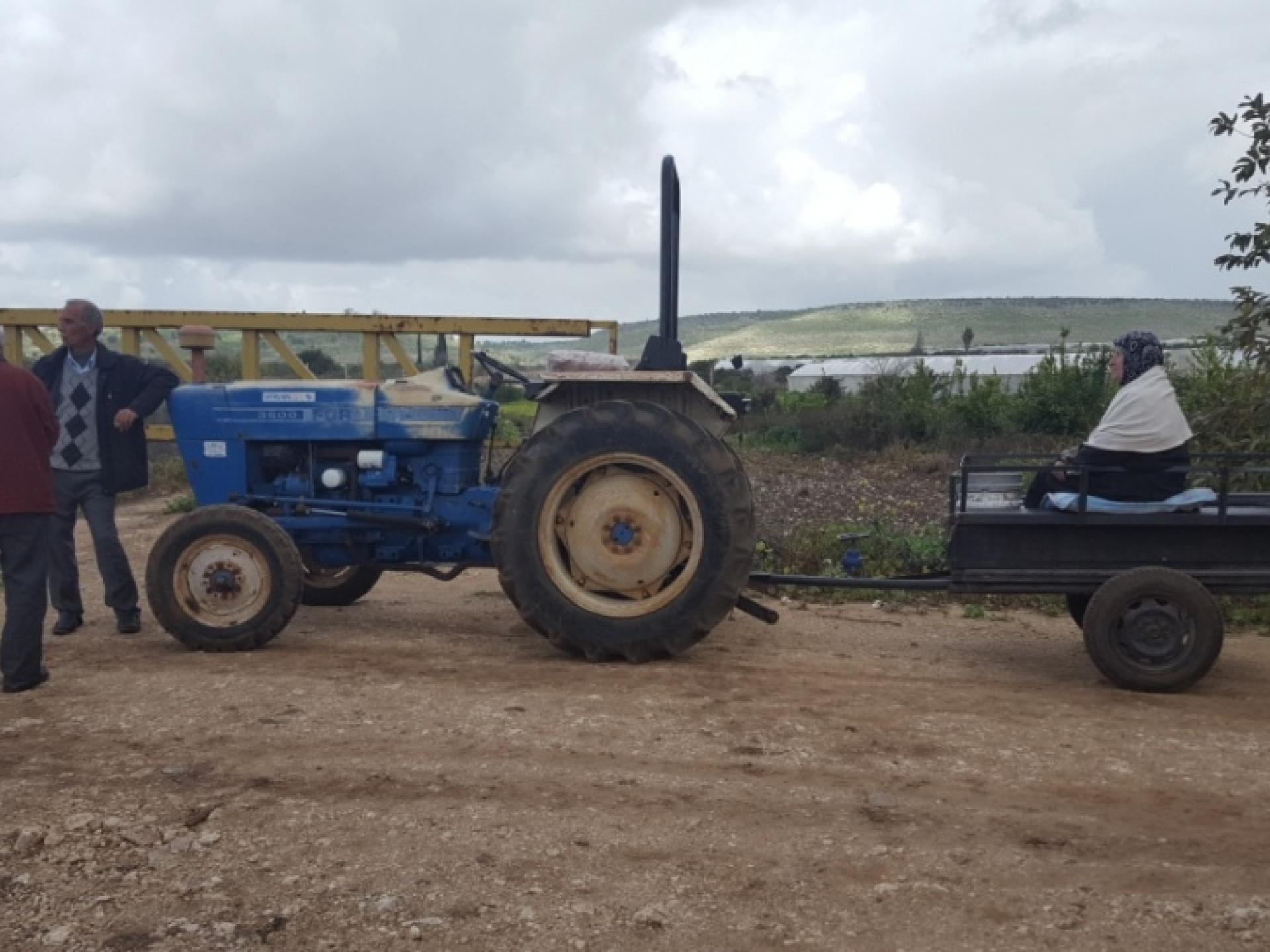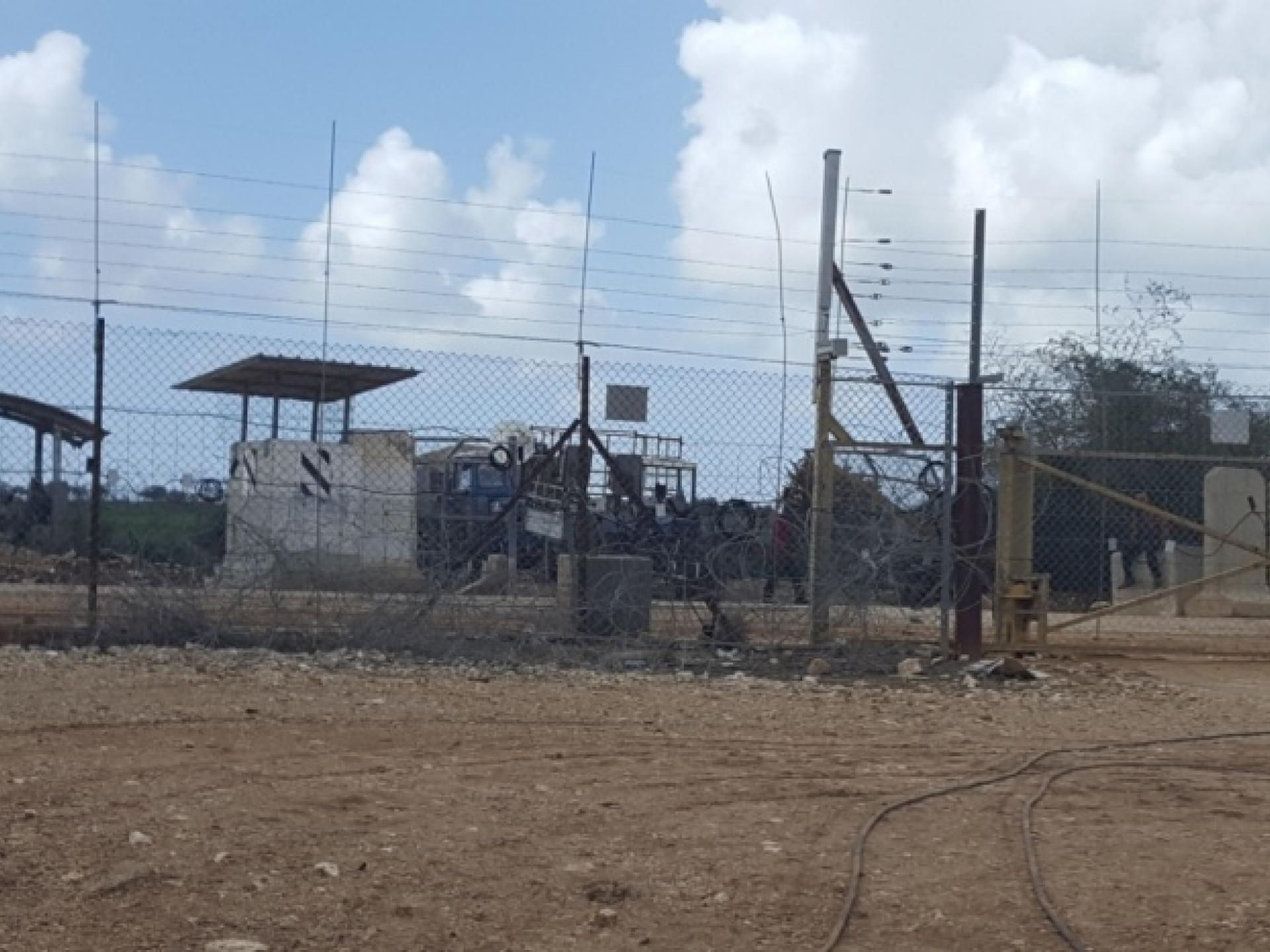Falamiya North Checkpoint (914), Falamiya South Checkpoint (935), Kufr Jammal
The old road to Nabi Ilyas has been upgraded and reopened.
Our first stop was the shop in ‘Azzun. No military presence at the entrance to ‘Azzun.
From ‘Azzun we drove north to the Falamiya checkpoints.
We stopped at the grocery store in Kufr Jammal. Z., 54, waits impatiently for his next birthday. When he’s 55 he’ll be able to visit his family in Tira. His son who’d been blacklisted obtained an Israeli work permit with the help of an attorney who charged him NIS 3500. The blacklisting, of course, was unjustified.
Another son is getting married; they plan to invite 3000 people to the wedding. They’re very happy.
He built large homes on his land for each of his six children. His three daughters are taken supported by their husbands. They’re studying in university. The sons are farmers. It’s usually quiet in Kufr Jammal. But the army enters at night once a month.
Falamiya north checkpoint No. 914
We arrived early and talked with four Palestinians from Kufr Jammal who’d come with a tractor.

One is a retired English teacher. His extended family owns 76 dunums on which they grow olives and za’atar. His friend also has a large area of za’atar. Now is the time to clear weeds and take care of the land in other ways. A man from Jayous comes to this checkpoint because it opens earlier, and gives him more time to work in the fields.
The military jeep arrives at 12:30. The gates open and the MP asks us not to photograph.
open and the MP asks us not to photograph.
Entering: 2 tractors, 7 people on foot.
Leaving: 4 people on bicycles, 7 on foot, 3 tractors.
A Bedouin man approaches us; his family’s tent is nearby. He says his father was expelled from the Negev in 1948 and reached Jayous. Many members of their family still live in the Negev. The family’s flock is grazing in the fields, which is why he lives here. His family has had a house in Jayous since 1948. Israelis from Kokhav Yair come to visit him in his tent and drink coffee.
Next to the pumping station at the exit we meet two representatives of the Palestinian Water Authority in Ramallah who came to inspect the well. It’s privately owned and provides irrigation water for the surrounding area; the owner is paid for the water. They note that Israel doesn’t allow new wells to be dug, and many areas of the West Bank have a problem of salinity. There’s no water shortage in the Falamya region.
Beehives, greenhouses and many lemon trees on the way to the second checkpoint. It turns out that when Palestinians are permitted to access their lands, they develop impressive agriculture.


Falamya south checkpoint (Jayous west) – 935

The soldiers arrive. The same MP yells, “No photographs.” The who area is one big military secret. I don’t reply.
Entering: A man on a bicycle.
Leaving: 1 tractor, 2 people on foot
Instead of returning the way we came, we continue in the opposite direction, making our way through fields, passing greenhouses, via Jayous to ‘Azzun and then home.
